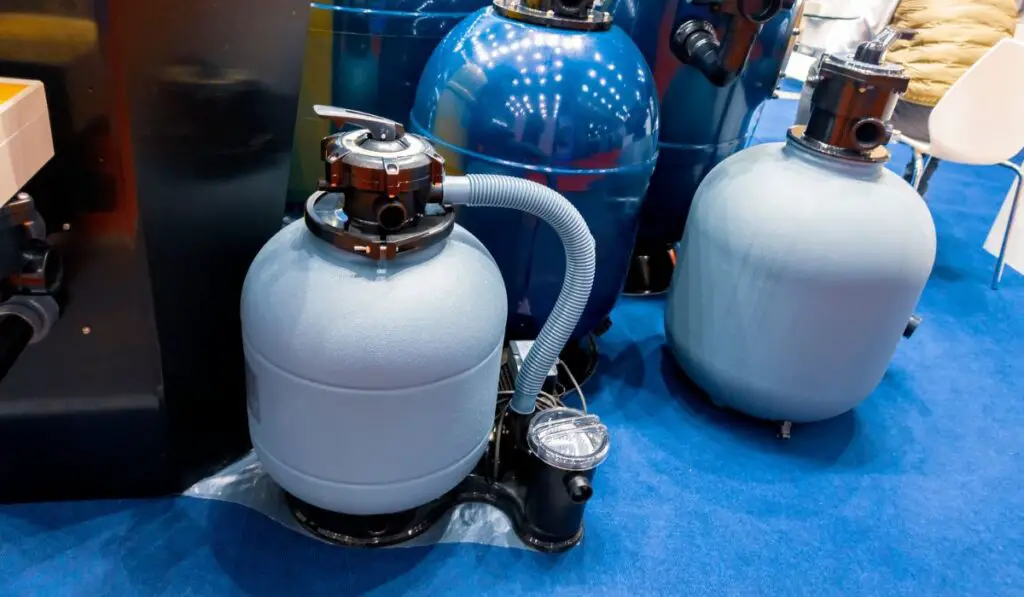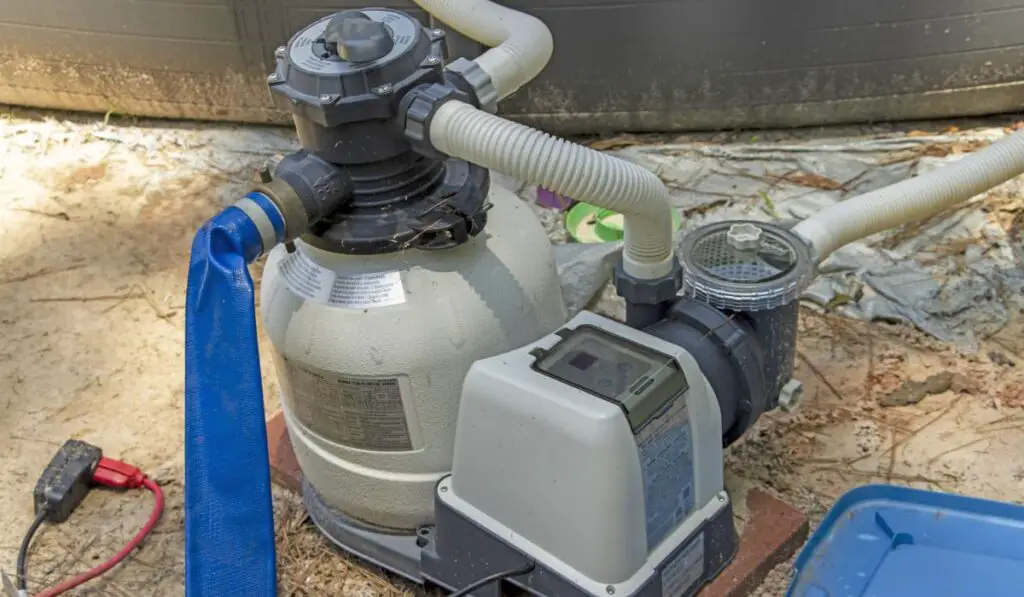Pool maintenance is essential, and a good sand filter is integral to this process. Sand filters help to remove dirt and debris from the pool water, making it clean and safe for swimming. But before you purchase a sand filter for your pool, you should know a few things to ensure you get the right one for your needs.
Sand filters are typically less expensive than other pool filters and require less maintenance. They also last longer and are inexpensive compared to other filters. Though they can be prone to clogging, if not well maintained, and parts of the filter can break and allow sand into the pool.
With that brief overview of things to understand before buying a pool sand filter, let’s jump right into the details and look at how sand filters work and how to maintain them.
How Does a Sand Filter Work?

A sand filter uses a tank, also known as a housing or canister, to hold the filter media (sand). This filter media is what your swimming pool water flows through so all the contaminants can be filtered out. The contaminants can be dirt, debris, and even some disease-causing bacteria.
The pump pushes water with high pressure from the top of the filter to the bottom of the tank. As the water then trickles, it passes through the sand which filters out pollutants. The sand grains have jagged, sharp edges which trap dirt and debris. They can also trap body waste. When the dirt particles have been filtered, the clean water is pumped back into the swimming pool.
After filtration, the system cleans the sand by backwashing, which can happen manually or automatically.
Backwashing reverses water flow, so it starts from the bottom of the filter, passes through the sand, and collects debris along the way. The water then reaches the top and is released to be disposed of rather than returning to the pool. It’s a relatively quick process that doesn’t require much effort.
Once the backwashing cycle is over, the system has been flushed out, and the sand is clean and ready to start filtering the pool water all over again. It’s important to ensure your sand filter is in good condition. For best results, backwash it regularly, replace any broken parts, and ensure there are no leaks.
What Kind of Sand Does a Sand Filter Use?
Sand filters require a special type of sand for them to work effectively. You can’t just go to the beach and come back with bucketloads of sand to use in the filter. You can only use “pool sand” in the filter, which is traditionally #20 silica sand.
This unique sand has larger grains than regular sand. You can purchase it at your local pool store or some hardware stores. Look for any sand labeled as “Filter sand” or “Pool Sand.”
Are Sand Filters Difficult to Maintain?
Maintaining sand filters is relatively easy but still calls for a bit of work which may include:
Cleaning the Sand Filter
You should backwash and rinse your sand filter regularly to ensure it’s properly functioning. To do this:
- Turn off the pump to help protect the internal parts of the sand filtration system.
- Connect the backwash hose to the waste line and open the valve.
- Turn the valve to the “Backwash” setting and switch on the pump.
- Backwash the filter for 3-5 minutes or until the water in the glass viewport runs clear.
- Turn off the pump again and turn the valve to the “Rinse” setting to reset the sand bed.
- Turn the pump back on, let it rinse for 30-45 seconds, and turn it back off.
- Turn the valve to “Filter” (the normal operating setting) and turn on the pump.
Replacing the Filter Sand
Generally, sand filter sand will last five to seven years. However, you may need to replace it as often as every three years. If you use Baquacil, you may need to replace the sand more frequently – typically once a year – as it can cause waste to coagulate in the tank.
Here are the steps for replacing the sand in your sand filter:
- Empty the water in the tank and take off the filter head.
- Use a scoop or shop vac to extract the old sand from the tank. Fill the tank halfway with water and add sand according to the sand filter’s instruction manual.
- Put the filter head back on and backwash the water for 30 seconds.
- Turn the valve to the “Filter” setting and ensure there are no leaks.
When replacing the sand in your filter, it’s important to follow the manufacturer’s instructions carefully and wear a face mask when handling the filter sand.
Additionally, adhere to the instructions when determining the amount of sand to add, as well as the backwash startup cycle. Leave about half the depth of the sand bed for free space, or freeboard, when adding the new sand.
You can ascertain this by looking for markings on your tank or consulting your user manual. (Your sand filter manufacturer should provide directions regarding the balance between the sand and freeboard ratio).
Are Sand Filters More Expensive Than Other Filter Types?
Sand filters are generally less expensive than cartridge, DE, and other filters because the materials used to make them are inexpensive. They also require less maintenance compared to other types of filters.
The average price of a new pool sand filter is between $300 and more than $1000. Inground filters are usually more expensive than above-ground ones but may cost anywhere from $450 to over $1,200, depending on the size. Above-ground filters can start at $300 to $500.
Installation and maintenance costs also come into play, with installation fees ranging from $500 to $1,200, depending on the project’s complexity. Maintenance costs usually involve replacing the sand every seven to ten years.
Filter replacement sand costs approximately $25 for a 50-pound bag. The amount you need to buy may vary greatly, depending on the size and model of the filter, but an average-sized inground pool filter usually requires 350 pounds of sand. However, the biggest expense involving a pool sand filter isn’t the sand but the purchase and installation of the filter itself.
What Are the Benefits of a Sand Filter?

Sand filters offer several benefits, such as:
- They are one of the most affordable pool filtration systems available.
- They are easy to operate and maintain. Even backwashing them is straightforward.
- Their filter media lasts longer than that of a cartridge or DE filter and is relatively inexpensive.
Are There Downsides to Owning a Sand Filter?
The disadvantages of owning a sand filter are:
- They require frequent backwashing to keep them functioning correctly.
- They are limited in the types of contaminants they can filter and have difficulty removing tiny particles, so the water clarity is always poor.
- Their laterals can break and allow sand to enter the pool.
- They are prone to clogging if you don’t replace the sand regularly.
